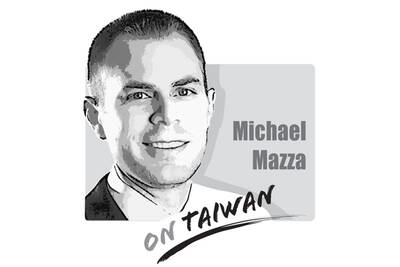The pre-eminent authority on the English language, the Oxford English Dictionary (OED), last month issued an update to one of its entries, adding the term “Chinese dragon” to its lexicon for the first time.
The Chinese word long (龍) has for a long time been translated simply as “dragon,” but many commentators opposed this, believing that the traditional Western concept of a dragon is represented by the embodiment of a fearsome, wicked monster that must be killed.
It was deemed unsuitable to use a wicked and inauspicious Western dragon to refer to an auspicious Chinese dragon, so it was recommended that a rectification be made to the entry.
The phonetic transliteration of the Mandarin for “Chinese dragon” can be written long, loong or lung.
There was sound reasoning behind the change. Chinese dragons and Western dragons bring to mind distinct physical traits and there are important differences in the cultural connotations.
Moreover, in terms of symbolism, the two types of dragons are polar opposites, respectively representing benevolence and wickedness.
The long spelling is from China’s Hanyu pinyin system, which is considered the international standard for Romanized Chinese.
The spelling is also used by Encyclopaedia Britannica and Wikipedia.
However, long could be misread as the English word “long,” referring to length, so the OED used “Chinese dragon.”
Culturally specific terminology in English is often derived from transliterations and doing so with such entries is universally applicable.
However, Chinese speakers should not have the final say over how English speakers use their own language.
New terms must be widely recognized by English speakers, which might take a long time.
Dictionary entries are not written in stone by a single person, but become part of a language when terms become common parlance and are broadly recognized by native speakers.
A sense-for-sense translation of long into English should allow connections to be drawn between Chinese and Western dragons, while also providing a synonym to allow more robust descriptions.
As understanding of the East has increased in the West, and amid deconstruction and reinterpretation of cultural signaling in the English language, the traditional definition of “dragon” as a ferocious entity has softened somewhat, influencing the awareness of English speakers.
Neither Webster’s Dictionary, which is widely used in the US, nor the New Oxford English Dictionary — which is distinct from the OED — have the term “Chinese dragon,” yet they have in their definitions for “dragon” descriptions of the benevolence and auspiciousness of the Chinese variety.
Languages evolve and definitions are fluid. The word “dragon,” which used to be negatively tinged, has gradually developed a more positive image.
More Westerners have come to see Chinese dragons as also having an auspicious meaning, and thus the term “dragon” can continue to be used to refer to Chinese dragons without throwing out the Western understanding of the word entirely.
Hugo Tseng is an associate professor and former chair of Soochow University’s literature and English-language department. He has participated in the editing and revision of several English-Chinese dictionaries and reference materials.
Translated by Tim Smith

Taiwan has lost Trump. Or so a former State Department official and lobbyist would have us believe. Writing for online outlet Domino Theory in an article titled “How Taiwan lost Trump,” Christian Whiton provides a litany of reasons that the William Lai (賴清德) and Donald Trump administrations have supposedly fallen out — and it’s all Lai’s fault. Although many of Whiton’s claims are misleading or ill-informed, the article is helpfully, if unintentionally, revealing of a key aspect of the MAGA worldview. Whiton complains of the ruling Democratic Progressive Party’s “inability to understand and relate to the New Right in America.” Many
The Centers for Disease Control and Prevention (CDC) earlier this month raised its travel alert for China’s Guangdong Province to Level 2 “Alert,” advising travelers to take enhanced precautions amid a chikungunya outbreak in the region. More than 8,000 cases have been reported in the province since June. Chikungunya is caused by the chikungunya virus and transmitted to humans through bites from infected mosquitoes, most commonly Aedes aegypti and Aedes albopictus. These species thrive in warm, humid climates and are also major vectors for dengue, Zika and yellow fever. The disease is characterized by high fever and severe, often incapacitating joint pain.
In nature, there is a group of insects known as parasitoid wasps. Their reproductive process differs entirely from that of ordinary wasps — the female lays her eggs inside or on the bodies of other insects, and, once hatched, the larvae feed on the host’s body. The larvae do not kill the host insect immediately; instead, they carefully avoid vital organs, allowing the host to stay alive until the larvae are fully mature. That living reservoir strategy ensures a stable and fresh source of nutrients for the larvae as they grow. However, the host’s death becomes only a matter of time. The resemblance
Most countries are commemorating the 80th anniversary of the end of World War II with condemnations of militarism and imperialism, and commemoration of the global catastrophe wrought by the war. On the other hand, China is to hold a military parade. According to China’s state-run Xinhua news agency, Beijing is conducting the military parade in Tiananmen Square on Sept. 3 to “mark the 80th anniversary of the end of World War II and the victory of the Chinese People’s War of Resistance Against Japanese Aggression.” However, during World War II, the People’s Republic of China (PRC) had not yet been established. It